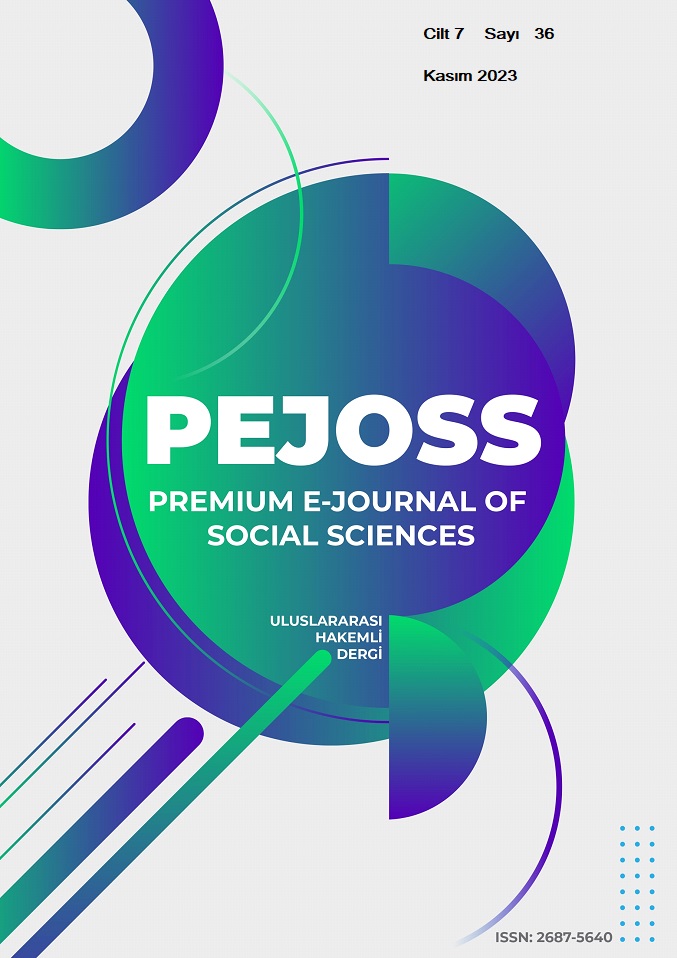The Effects of Political Developments in the Soviet Union in the Post-1950 Period on the Works and Musical Style of Russian Composer Sofia Gubaidulina
DOI:
https://doi.org/10.5281/zenodo.10258182Keywords:
Sofia Gubaiduina, Soviet Union, Violin Compositions, Polystylism, Fibonacci SeriesAbstract
Sofia Gubaidulina (1931-), with over a hundred works, has established herself internationally as a pioneering female composer representing the polystylistic movement from the late 20th to the 21st century. Her life, compositional style, approach to music, and various phases in her career have left a mark on the music world, serving as an inspiration to new generations of composers.
In the early 20th century, when empires collapsed and nation-states emerged, there was a tendency to recognize elements of existing cultures to form their unique national identities. This trend was most noticeable in fields such as painting and sculpture; however, it can be argued that music was one of the areas where this quest was particularly evident. This phenomenon, prominently observed in Europe after the French Revolution, assumed a distinct identity in Eastern European and Middle Eastern countries in the early 1920s. In Russia, this historical phenomenon was observed in the Russian Five, and it continued to enrich and evolve through studies, especially in the field of contemporary classical music. In this context, Sofia Gubaidulina emerged as one of the prominent names among Russian composers after the 1950s. The composer grew up under the influence of this historical period and stood out in the Russian music scene throughout her career, carrying this legacy forward.
Gubaidulina is known for her innovative and experimental approaches that transcend the traditional boundaries of classical music. Her contributions, particularly to the violin repertoire, have allowed for the exploration of the technical and emotional diversity of these instruments. By internalizing Russia's rich musical tradition and interpreting this cultural heritage through a contemporary perspective via the violin and other instruments, she has expanded the boundaries of contemporary classical music. She has not only preserved the legacy of traditional Russian music but also pushed the limits of contemporary music.
In this study, Sofia Gubaidulina's life, the works which she contributed to the violin repertoire, her musical language, and her style are examined through a literature review method. This study aims to shed light on her contributions to both the Russian violin school and classical music globally. Considering that her works are not part of music education curricula and are not performed, it is believed that this study will contribute to music education and the violin repertoire.
Downloads
References
Biber, J. (2016). Ten Etudes for Solo Cello by Sofıa Gubaidulina. [Yayınlanmış Doktora Tezi] City University of New York.
Gubaidulina, S. (1941). Dancer on a Tightrope for Violin and Piano. Edition Sikorski.
Jaunslaviete, B. (2018). The Theory of Polystylısm as A Tool For Analysıs of Contemporary Musıc In The Postsovıet Cultural Space: Some Termınologıcal Aspects. Hırvat Dili ve Dilbilim Enstitüsü Dergisi, 44(2), 455-465. https://hrcak.srce.hr/clanak/318266
Kara, Z. E. (2019). Aesthetıcal And Technıcal Analysıs Of Selected Flute Works By Sofıa Gubaidulina, [Ph.D. Thesis], Istanbul Technical University Institute Of Social Sciences, Department of Music Music Programme, İstanbul.
Kocaman, D. A. (2017). Scnittke’nin 1. Çello Sonatının Ses Alanlarının İncelenmesi, [Yayınlanmış Yüksek Lisans Tezi]. Yaşar Üniversitesi Sosyal Bilimler Enstitüsü, Sanat ve Tasarım Anasanat Dalı, İzmir.
Kurtz, M. (2007). Sofia Gubaidulina: A Biography. Malcolm Hamrick Brown (Ed.), Translated by Christoph K. Lohman. Bloomington: Indiana University Press.
Mehdiyeva Azizzade, T. (2013). Rus Non-Konformizmi / Russian Non-Comformism. Güzel Sanatlar Enstitüsü Dergisi, (31), 93-118.
Order in Chaos (t.y.). https://orderinchoas.wordpress.com/2013/05/18/music-the-fibonacci-sequence-and-phi/
Özmen, O. (2017). 12 Ton Tekniği Ve Determinist Kaos Kavramı İle Benzeşen Yönleri. Sahne ve Müzik Eğitim- Araştırma e-Dergisi, 0 (4), 38-49. ISSN: 2149-7079.
Regovich, K. (2016). To Be Totally Free: Galina Ustvolskaya, Sofia Gubaidulina, and the Pursuit of Spiritual Freedom in the Soviet Union. [Honors Thesis Collection], 366.
Tsenova, V. (2001). Number and Proportion in the Music of Sofia Gubaidulina. Mitteilungen der Paul Sacher Stiftung, (14).
Tsenova, V. (2002). Magic numbers in the music of Sofıa Gubaidulina. Muzikologija, (2) 253-261. DOI: 10.2298/MUZ0202253T.
Yatkın, S. (2018). Günümüz Bestecilerinden Sofia Gubaidulina Ve Ülkemizde Viyolonsel Müfredatına Girebilecek ‘Solo Viyolonsel İçin On Prelüd’ Eserinin Teknik Açıdan İncelenmesi, [Yayınlanmış Yüksek Lisans Tezi]. Mersin Üniversitesi Güzel Sanatlar Enstitüsü, Müzik Anasanat Dalı.
Downloads
Published
How to Cite
Issue
Section
License
Copyright (c) 2023 Premium e-Journal of Social Science (PEJOSS)

This work is licensed under a Creative Commons Attribution 4.0 International License.


